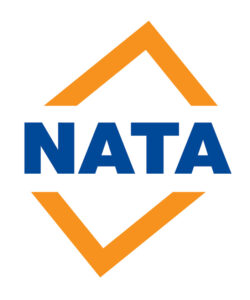Pressure Gauges
Calwest Services offer repairs and servicing of all brands and types of pressure gauges, vacuum gauges, and pressure transducers to ensure reliable operation. We will clean and lubricate your instrument as part of our calibration service.
For more extensive repairs, we will empty the gauge, perform the repairs and replace parts, refill the gauge with glycerine, and calibrate it to ensure correct operation and reliability. If your pressure gauges are damaged beyond repair, Calwest Services can supply a new gauge with a calibration certificate.
To ensure accuracy and instrument reliability, Calwest Services recommends the following preventive maintenance and usage guide:
Usage Guide
- Before installing the gauge, it is important to identify the type of thread used. This prevents thread damage and ensures correct sealing. See below for more information on the common types of pressure gauge threads.
- Ensure the internal thread is clean and free from contamination. Remove old thread sealant and / or replace the washer, if required.
- Care must be taken to prevent contaminants, such as thread sealant, falling into the internal pipework. Potentially, contaminants can clog internal valves and cause system failure.
- Check that both the internal and external threads are free from burrs and damage, and repair or replace if necessary.
- If using thread tape or sealant, ensure that the last two threads are sealant free. This will prevent excess sealant dropping into and contaminating the internal pipe system while installing the gauge.
- To prevent damaging the threads, take care to install the gauge square to the pipe and do not use excessive force. If you suspect the gauge is not screwing in correctly, take it back out and check the threads for damage.
Thread types
BSP (British Standard Pipe) is the most common pipe thread used in Australia, and comes in both a parallel and tapered version. BSPP (Parallel) requires the use of a crush washer – the type depends on the system requirements. The less common BSPT (Taper) seals by crushing the thread, and does not require a washer or sealing compound.
Most American pressure gauges use NPT (National Pipe Thread), they must be used with thread tape or a sealing compound to prevent leakage. Some gauges use NPTF (National Pipe Thread Fuel) which seal through crushing the threads, and do not require a sealing compound.
Preventive Maintenance
- Have the gauge regularly tested and calibrated annually.
- Install a gauge several time larger in capacity than operating system pressure. This will safeguard against pressure spikes.
- Be mindful of the system requirements. Install an appropriate gauge to compensate for extreme temperatures, steam, corrosive fluids, congealing fluids, and system vibration. It is recommended to talk to an expert about your system requirements.
- Permanently installed gauges should include an isolation valve, to allow emptying when not in use.
- Gauges under constant pressure will need a flow restrictor to prevent damage from oscillation and pressure spikes.
For more information on pressure gauge calibration and repairs, call Calwest Services on(08) 9451 5070.


